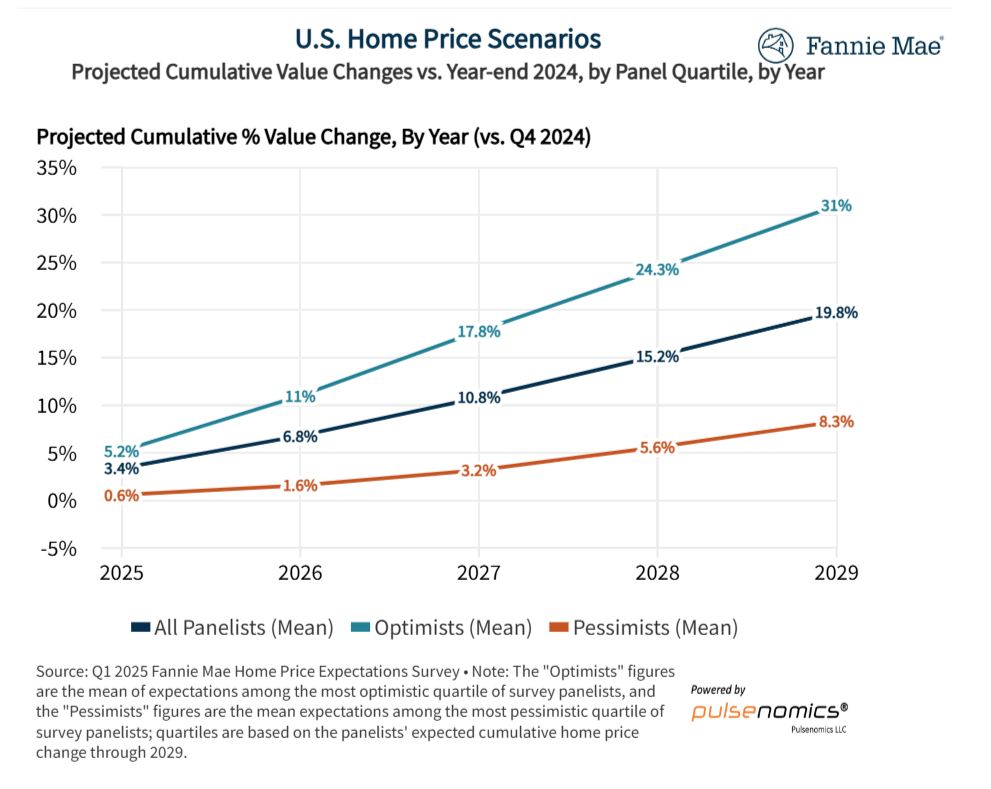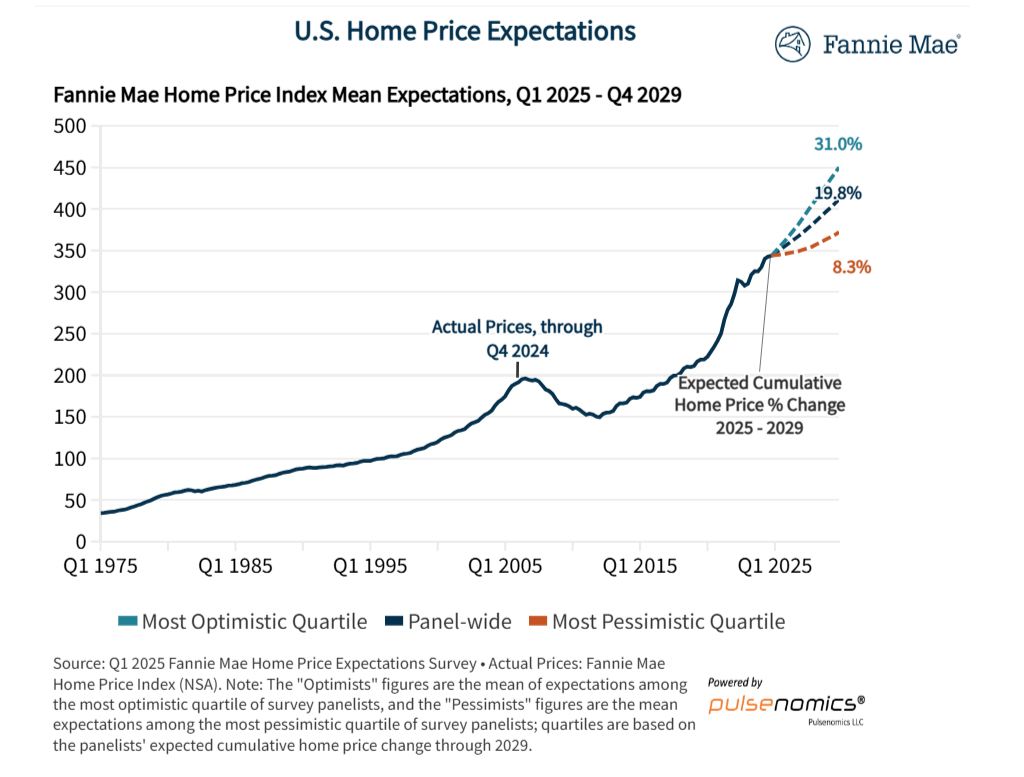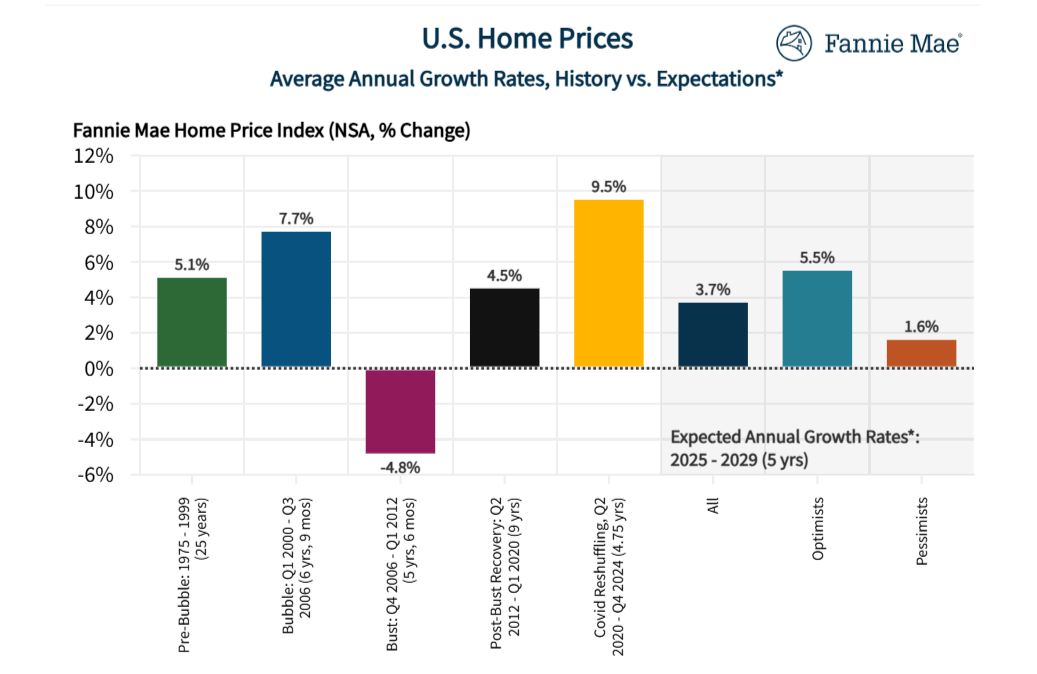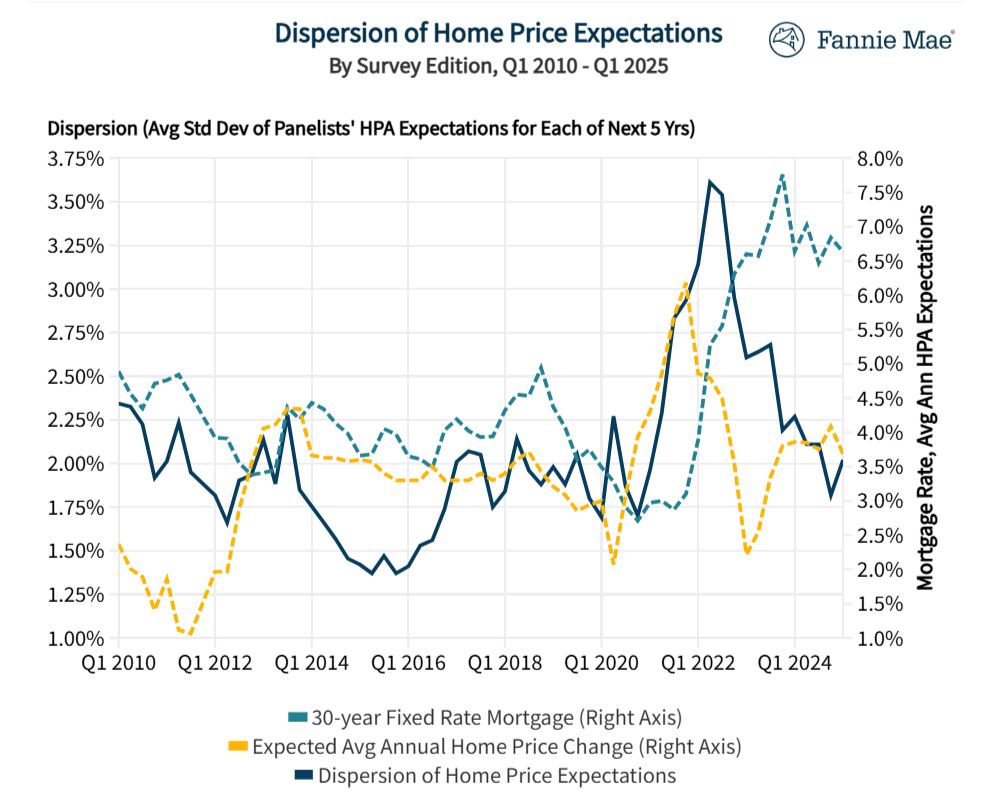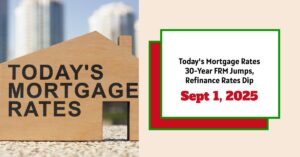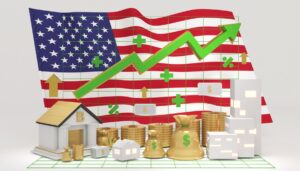As we enter the latter half of 2025, a key question on everyone's mind is: what's next for mortgage rates? At Norada Real Estate Investments, we believe the most likely scenario for mortgage rates for the rest of 2025 points to a gradual cooling, with 30-year fixed rates settling in the 6.3% to 6.5% range by year's end, provided the Federal Reserve continues with its anticipated rate cuts. This outlook is based on our analysis of current economic signals, expert consensus, and our own experience in the real estate investment world.
Mortgage Rates Predictions for the Latter Half of 2025 by Norada Real Estate
For over two decades, I've been deeply involved in helping people build wealth through real estate, particularly with turnkey rental properties in high-growth areas. I've seen firsthand how mortgage rates act as a major lever for both buyers and investors. Seeing rates hover around 6.5% as of late August 2025, a noticeable dip from earlier in the year, feels like a step in the right direction, but the path forward isn't entirely clear-cut.
We’ve gathered insights from reputable sources like Fannie Mae, the National Association of Realtors (NAR), and the Mortgage Bankers Association (MBA), and I want to share our detailed perspective. We'll dive into what's moving the needle, what the experts are saying, and what this means for you, whether you're looking to buy a home, sell, refinance, or invest.
Understanding the Current Mortgage Rate Environment
It’s easy to forget just how much mortgage rates have shifted. Remember those incredibly low rates below 3% in 2020-2021? It feels like a different era now. As of late August 2025, the average 30-year fixed-rate mortgage (FRM) is sitting at about 6.51%, according to Mortgage News Daily. This is a welcome drop from the 7.04% peak we saw back in January, but it’s still a far cry from the ultra-low rates of a few years ago.
These rates are closely tied to the 10-year Treasury yield, which has been fluctuating around 4.2% to 4.5%. It's a bit of a balancing act out there. While shorter-term loans, like the 15-year FRM, are more attractive at around 5.7%, they mean a bigger monthly payment for many. Adjustable-rate mortgages (ARMs) are still an option, starting around 6.0-6.2%, but they come with the risk of rates going up later.
Looking at the long haul, the average mortgage rate between 1971 and 2025 has been around 7.71%. So, in that historical context, today's rates aren't sky-high. However, after experiencing those historically low rates, even 6.5% can feel like a stretch. This is why, while many potential homebuyers might be wincing, savvy investors are finding opportunities where rental income can still comfortably cover the borrowing costs.
Key Factors Influencing Mortgage Rates in Late 2025
Mortgage rates don't just move on their own; they’re heavily influenced by a mix of economic signals and the actions of the Federal Reserve. Here’s what’s really shaping things:
- The Federal Reserve's Game Plan: The Fed's target interest rate, currently between 4.25% and 4.5%, has a big impact on mortgage rates. Even though the Fed kept rates steady in July 2025, there were a couple of votes suggesting they might consider cuts sooner rather than later, especially with some signs of labor market weakness. Fed Chair Powell has hinted that the conditions might soon be right for rate reductions, and many believe a 0.25% cut could happen at the September meeting. The Fed's own projections from June suggested the federal funds rate could be around 3.9% by the end of 2025, which implies one or two cuts if the economy continues to cooperate.
- Inflation Cooling Down?: Inflation is a huge factor. The Consumer Price Index (CPI) was running at 2.7% year-over-year in July, with core inflation at 3.1%. The Fed's preferred inflation gauge, the PCE, is expected to be around 3.0% for the year. If inflation continues to trend down towards the Fed's 2% target, we'll likely see mortgage rates fall. However, if things like tariffs or supply chain issues cause inflation to stick around, it could keep rates from dropping much further.
- Jobs and Economic Growth: The unemployment rate ticked up to 4.2% in July, and it’s expected to be around 4.5% by the end of the year. This slight increase, along with GDP growth projected to be around 1.4% for 2025, signals a bit of an economic slowdown. This kind of data usually encourages the Fed to consider lowering interest rates. If job growth continues to be sluggish, as seen in July's report, it could also fuel fears of a recession, which historically tends to bring interest rates down.
- What's Happening Globally and Politically: The political climate, especially after the 2024 elections, can introduce its own set of uncertainties. New policies, including tariffs, could affect the economy. Higher government debt might push Treasury yields up, which in turn can keep mortgage rates higher. Plus, any global conflicts or sudden spikes in oil prices could unexpectedly push inflation higher, working against any potential rate drops.
Expert Predictions and Norada's Forecast
When we look at what the major players are predicting, there's a general consensus that rates will likely ease a bit by the end of 2025. Here’s a snapshot of what various sources are forecasting:
| Forecaster | Q3 2025 Average | Q4 2025 Average | End-2025 |
|---|---|---|---|
| Fannie Mae | 6.6% | 6.5% | 6.5% |
| NAR | 6.7% | 6.6% | 6.5% |
| MBA | 6.8% | 6.7% | 6.7% |
| Realtor.com | 6.7% | 6.5% | 6.4% |
| Wells Fargo | 6.65% | N/A | N/A |
| NAHB | N/A | N/A | 6.62% |
Sources: Compiled from recent industry reports.
Our Own Forecast at Norada Real Estate: Based on all this information, our team at Norada predicts that the average 30-year FRM will likely hover between 6.4% and 6.6% in the third quarter. As we head into the fourth quarter, we anticipate a further slight dip, landing in the 6.3% to 6.5% range by year's end. This forecast hinges on the Fed indeed making one or two rate cuts, inflation continuing to cool down, and no major unexpected economic shocks hitting us. If, however, the economy weakens faster than expected, or inflation proves more stubborn, rates might stay closer to 6.6%. On the optimistic side, if everything breaks perfectly, we could even see rates dip below 6.3% by December.
Our Forecast Summary
Based on anticipated Fed rate cuts and cooling inflation, we predict rates will gradually decline from current levels, with potential for further drops if economic conditions align favorably.
Risks, Opportunities, and the Ongoing Debates
While the general trend seems to be downward, it's important to acknowledge the potential bumps in the road and the differing viewpoints out there.
Potential Risks: One significant risk is the “lock-in effect.” Many homeowners who secured lower rates in recent years are reluctant to sell and move because they'd have to take out a new mortgage at a higher rate. This can keep the supply of homes for sale tighter than it otherwise would be, impacting the market. There's also a debate: some argue that the Fed is being too slow with rate cuts, making housing less affordable for people, especially first-time buyers. Others worry that cutting rates too soon could accidentally reignite inflation.
Opportunities Abound: For real estate investors, rates around 6.5% can still be very attractive, especially in markets where rental income yields are strong, often in the 8-10% range. We're seeing projected home sales of around 4.74 million for 2025, with home prices expected to rise by about 2.5%. This points to a relatively stable market where smart investments can still yield good returns.
Differing Views: While many are hopeful that Fed cuts will provide relief, some analysts point to deeper economic issues, like the national debt, suggesting that these factors might prevent mortgage rates from falling as much as people hope. It’s a complex picture where optimism needs to be balanced with a realistic look at broader economic pressures.
Related Topics:
Mortgage Rates Predictions Next 90 Days: August to October 2025
Mortgage Rates Predictions Next 60 Days: August to October 2025
Mortgage Rate Predictions for the Next 3 Years: 2026, 2027, 2028
Advice for Different Groups of People
Navigating these potential rate changes requires a strategic approach. Here’s what I’d recommend:
- For Homebuyers: If you’re looking to buy, don't just sit on the sidelines waiting for the “perfect” rate, especially if you find a home you love now. If you qualify for a rate below 6.5%, it might be wise to lock it in. You can always look into refinancing later if rates drop significantly. Exploring options like mortgage rate buydowns can also make your initial payments more manageable.
- For Sellers: If you’re thinking of selling, timing your listing for the fourth quarter might be beneficial, especially if rates do dip. This could attract more buyers who are ready to make a move.
- For Those Looking to Refinance: Keep a close eye on the market. If you see a drop of half a percentage point or more on your current mortgage rate, it could lead to significant savings. For example, refinancing a $400,000 loan could save you around $200 per month.
- For Investors: The key for investors is to focus on properties in stable markets with strong job growth. This helps ensure that rental income remains consistent. At Norada, we strongly advise looking for turnkey properties that offer reliable cash flow, even in fluctuating rate environments.
In summary, while the real estate market always has its complexities, the outlook for mortgage rates through the remainder of 2025 suggests a gradual easing. Staying informed and making strategic decisions based on solid data and expert advice will be crucial for success. If you're interested in exploring investment opportunities that align with these market trends, don't hesitate to reach out to us at Norada. We're here to help you build your real estate wealth.
Invest Smarter in a High-Rate Environment
With mortgage rates remaining elevated this year, it's more important than ever to focus on cash-flowing investment properties in strong rental markets.
Norada helps investors like you identify turnkey real estate deals that deliver predictable returns—even when borrowing costs are high.
HOT NEW LISTINGS JUST ADDED!
Connect with a Norada investment counselor today (No Obligation):
(800) 611-3060
Also Read:
- Mortgage Rates Predictions 2025 and 2026 by Fannie Mae
- Mortgage Rates Predictions 2026 by Warren Buffett’s Berkshire Hathaway
- Will Mortgage Rates Go Down in 2025: Morgan Stanley's Forecast
- Mortgage Rate Predictions 2025 from 4 Leading Housing Experts
- 30-Year Fixed Mortgage Rate Forecast for the Next 5 Years
- 15-Year Fixed Mortgage Rate Predictions for Next 5 Years: 2025-2029
- Will Mortgage Rates Ever Be 3% Again in the Future?
- Mortgage Rates Predictions for Next 2 Years
- Mortgage Rate Predictions for Next 5 Years
- Mortgage Rate Predictions: Why 2% and 3% Rates are Out of Reach
- How Lower Mortgage Rates Can Save You Thousands?
- How to Get a Low Mortgage Interest Rate?
- Will Mortgage Rates Ever Be 4% Again?




